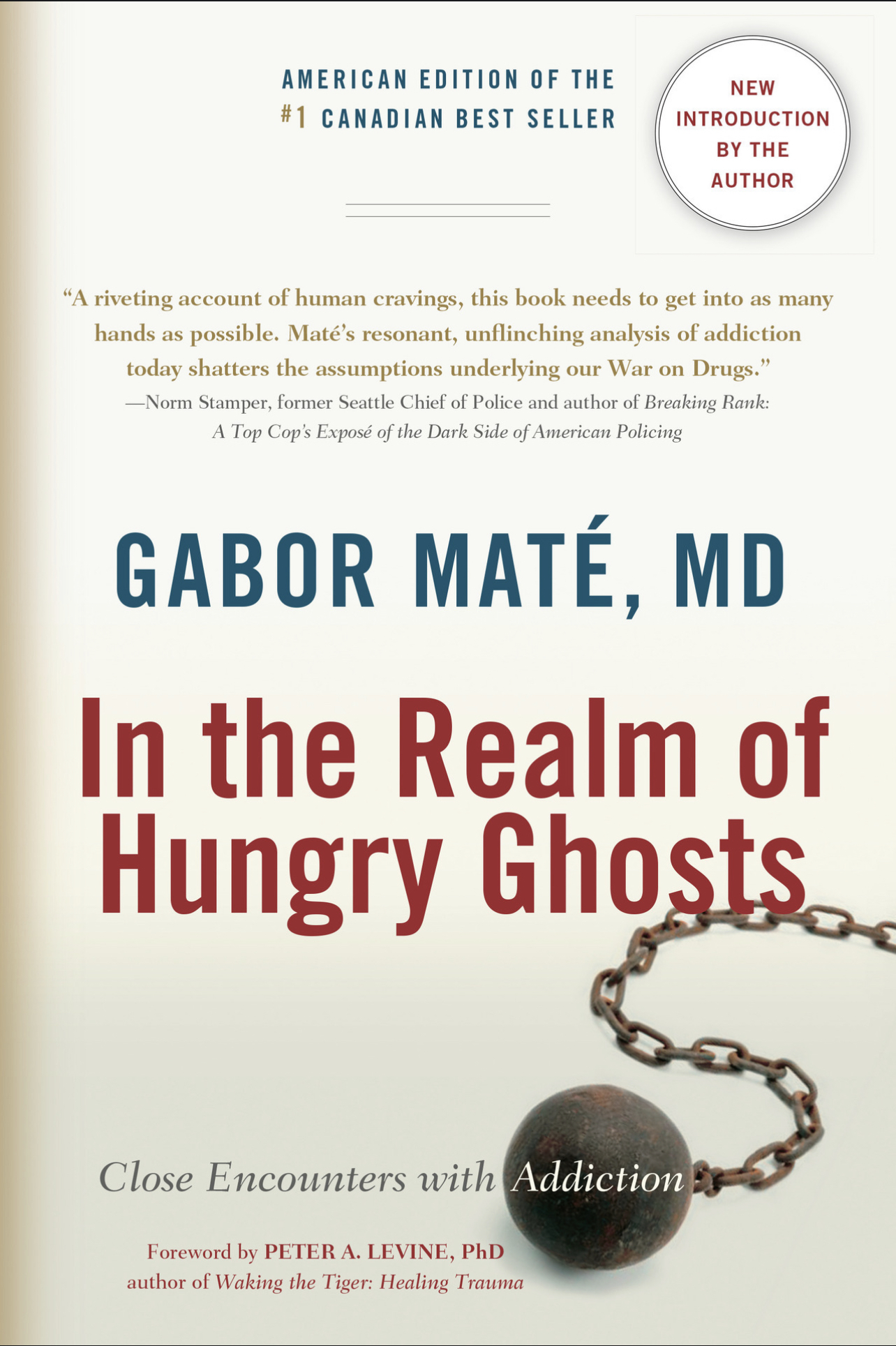← In the Realm of Hungry Ghosts Close Encounters with Addiction
In the Realm of Hungry Ghosts Close Encounters with Addiction Chapter 11. What Is Addiction?
Author: Gabor Mate Publisher: Berkeley, CA: North Atlantic Books Publish Date: 2010-1-5 Review Date: Status:📚
Annotations
167
What, then, is addiction? In the words of a consensus statement by addiction experts in 2001, addiction is a “chronic neurobiological disease … characterized by behaviors that include one or more of the following: impaired control over drug use, compulsive use, continued use despite harm, and craving.”1 The key features of substance addiction are the use of drugs or alcohol despite negative consequences and relapse. I’ve heard some people shrug off their addictive tendencies by saying, for example, “I can’t be an alcoholic. I don’t drink that much,” or “I only drink at certain times.” The issue is not the quantity or even the frequency, but the impact. “An addict continues to use a drug when evidence strongly demonstrates the drug is doing significant harm.… If users show the pattern of preoccupation and compulsive use repeatedly over time with relapse, addiction can be identified.”2
535
- N. S. Miller and M. S. Gold, “A Hypothesis for a Common Neurochemical Basis for Alcohol and Drug Disorders,” Psychiatric Clinics of North America 16(1) (1993): 105–17. 167
Addiction is any repeated behavior, substance-related or not, in which a person feels compelled to persist, regardless of its negative impact on his life and the lives of others. Addiction involves:
compulsive engagement with the behavior, a preoccupation with it;
impaired control over the behavior;
persistence or relapse despite evidence of harm; and
dissatisfaction, irritability, or intense craving when the object—be it a drug, activity, or other goal—is not immediately available.
Compulsion, impaired control, persistence, irritability, relapse, and craving—these are the hallmarks of addiction—any addiction.
168
How does the addict know she has impaired control? Because she doesn’t stop the behavior in spite of its ill effects. She makes promises to herself or others to quit, but despite pain, peril, and promises, she keeps relapsing. There are exceptions, of course. Some addicts never recognize the harm their behaviors cause and never form resolutions to end them. They stay in denial and rationalization. Others openly accept the risk, resolving to live and die “my way.”
170
Note, too, that neither the textbook definitions of drug addiction nor the broader view we’re taking here includes the concepts of physical dependence or tolerance as criteria for addiction. Tolerance is an instance of “give an inch, take a mile.” That is, the addict needs to use more and more of the same substance or engage in more and more of the same behavior to get the same rewarding effects. Although tolerance is a common effect of many addictions, a person does not need to have developed a tolerance to be addicted. And then there’s physical dependence. As defined in medical terms, physical dependence is manifested when a person stops taking a substance and, due to changes in the brain and body, she experiences withdrawal symptoms. Those temporary, drug-induced changes form the basis of physical dependence. Although a feature of drug addiction, a person’s physical dependence on a substance does not necessarily imply that he is addicted to it. The withdrawal syndrome is different for each class of drug. In the case of opiates such as morphine or heroin it includes nausea, diarrhea, sweats, aches and pains, and weakness, as well as severe anxiety, agitation, and depressed mood. But you don’t have to be addicted to experience withdrawal—you just have to have been taking a medication for an extended period of time.3 As many people have discovered to their chagrin, with abrupt cessation it’s quite possible to suffer highly unpleasant withdrawal symptoms from drugs that are not addictive: the anti-depressants paroxetine (Paxil) and venlafaxine (Effexor) are but two examples. Withdrawal does not mean you were addicted; for addiction, there also needs to be craving and relapse. In fact, in the case of narcotics, it turns out that the addictive, “feel good” effect of these drugs seems to act in a different part of the brain than do the effects that lead to physical dependence. When morphine is infused only into the “reward” circuits of a rat’s brain, addiction-like behavior results, but there’s no physical dependence and no withdrawal.4
171
“Dependence” can also be understood as a powerful attachment to harmful substances or behaviors, and this definition gives us a clearer picture of addiction. The addict comes to depend on the substance or behavior in order to make himself feel momentarily calmer or more excited or less dissatisfied with his life. That’s the meaning I’ll be referring to unless I am specifically describing physical dependence, the narrower medical phenomenon. Father Sam Portaro, author and former Episcopalian chaplain to the University of Chicago, said it admirably well in a recent lecture: “The heart of addiction is dependency, excessive dependency, unhealthy dependency—unhealthy in the sense of unwhole, dependency that disintegrates and destroys.”5
